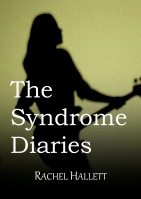The rise of the introvert
There seems to have been a lot of talk of introverts recently, with books extolling our virtues making best-seller lists. Like many writers, I generally prefer my own company to that of others. I like to meet up with people, but after an hour or so, begin to feel drained.
We’re still often seen as needing help, or viewed negatively. One friend said she considered introverts by definition to be selfish – but isn’t needing other people to be around you more selfish? We seem to be seen as problematic because we don’t fit the majority view of what’s desirable. I’ve realised that I tick a lot of boxes for schizoid personality disorder simply by being an introvert, which is something that therapists think should be ‘fixed’ (no, I don’t need fixing. I’m not broken). I’m not sure whether this is lack of understanding or an urge to pathologise for profit’s sake.
I’m quite capable of social interaction when required. I’m not shy. I’m not desperate to belong or be accepted. My instant reaction when receiving social invitations is ‘How can I wriggle out of this without seeming rude?’ A couple of hours with a friend? No problem. An evening with a crowd? No thanks. But if I need to mingle, I can do so perfectly competently – with some effort, I have to admit.
As Anneli Rufus observes in Party of One: The Loners’ Manifesto, introversion is regularly associated with crime. Serial killers are often described as ‘loners,’ but this may be misguided: they are more likely to be outcasts, who want to join in but are rejected. Introverts are quite happy on their own, thank you very much. To add some balance, here’s a youtube thingy of Sister Wendy Beckett, a nun who’s had several TV series in the UK on art appreciation. I heard her interviewed on the radio over Christmas for Desert Island Discs, and she figured the only thing she’d miss on a desert island was attending Mass – other than that, the isolation would be a huge positive for her. Someone once said to her that she was the only person he knew who was perfectly happy without other people – “And it wasn’t a compliment,” she said.
Reading Rufus’ book has made me question my preferences. Why do I love my evenings at my writers’ group? (Because you can sit and listen, in your own little world, and there’s no pressure to make polite conversation). Why do I enjoy running in a group? (Because you can trot along, in your own little world, and nobody’s capable of non-stop talking because they need the breath) Why am I unfazed by public speaking, or leading an exercise class, but freeze when asked to play piano to an audience? (I really have no idea. Any suggestions?)
As far as writing goes, introversion is probably an advantage: it’s quite an isolated activity. It’s also possibly the reason that so many of my characters are relative introverts too. I can relate to them. I found writing India’s dialogue and diary entries in The Syndrome Diaries the most challenging part of the novel, as her extroversion was quite alien to the way I am.
Do you identify more as an introvert or extrovert? Do you think it affects the way you write – in terms of your writing activity, or the content?

















